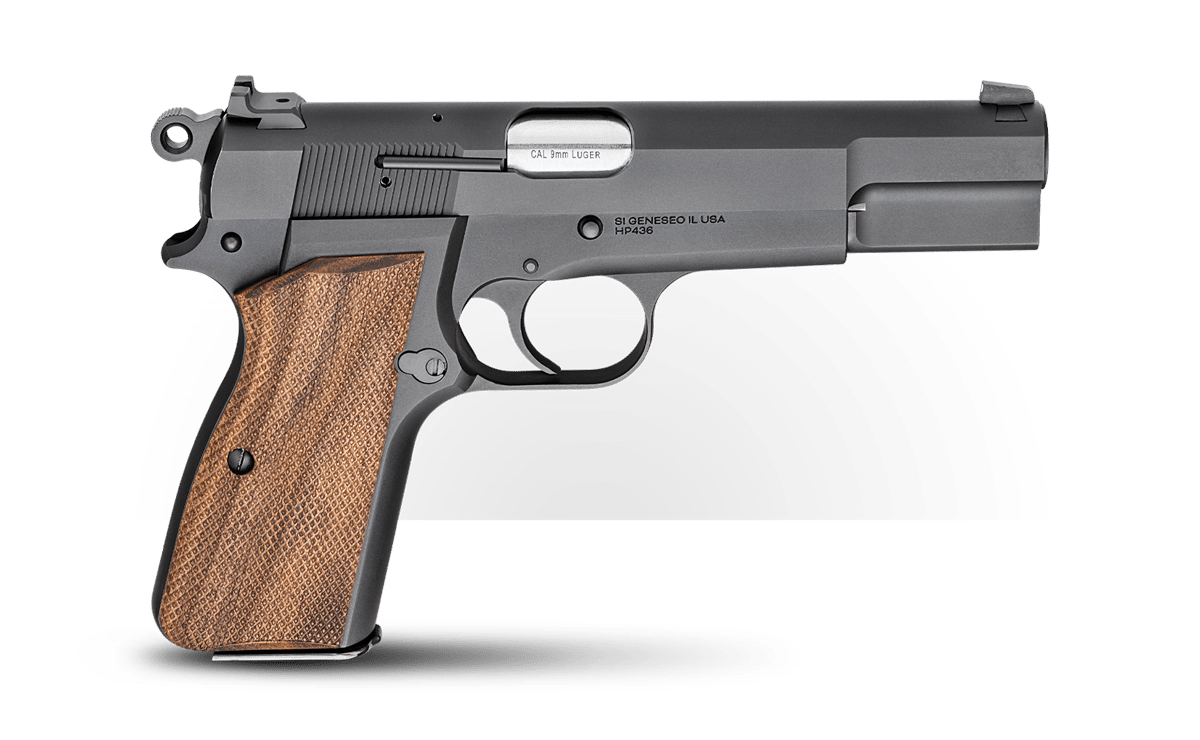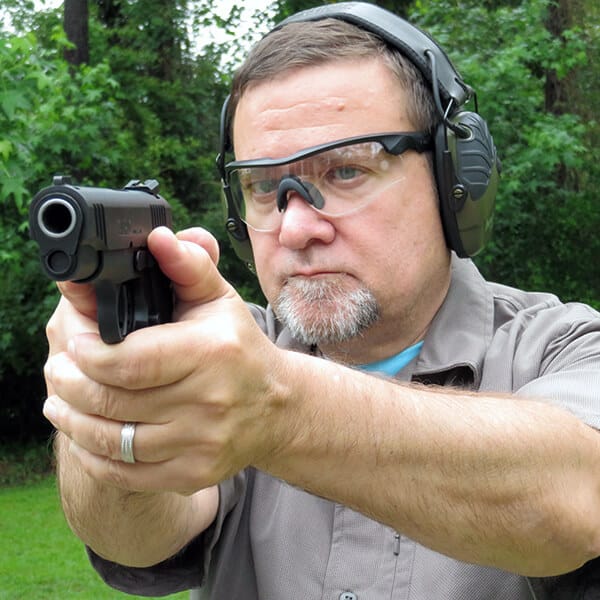Nazis, Noms de Geurre and the Complex History of the Hi-Power
March 26th, 2022
5 minute read
It all started with the French. Specifically, the French military. Fresh off the War To End All Wars, or World War I, the French were keen on updating their sidearm, and the task was given to star firearms designer John Moses Browning, sage of everything that uses a trigger and goes bang.
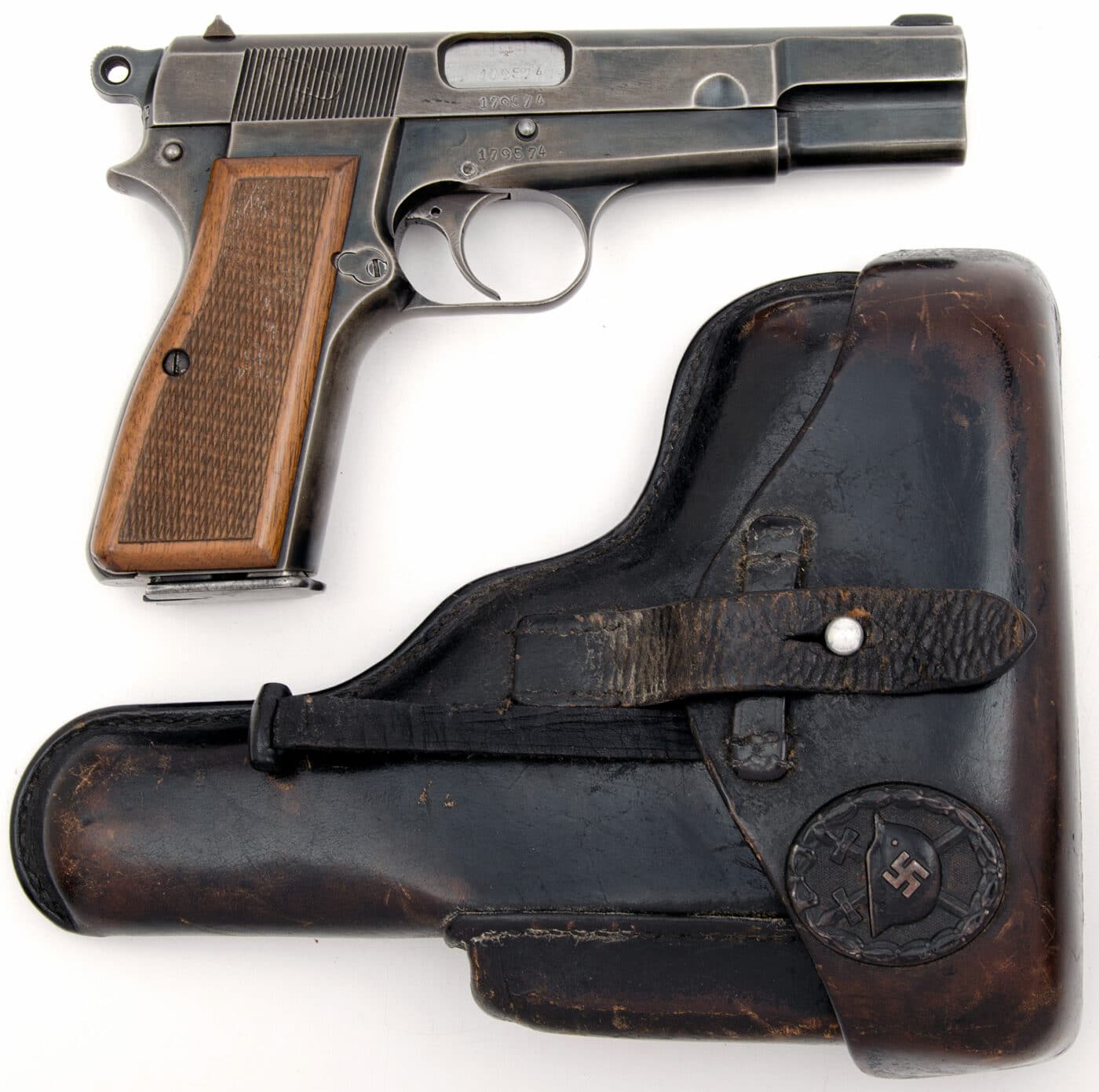
The French military called the new service pistol in development the Grande Puissance, which translates roughly to “High Power”. So, now you know how the name for John Browning’s last pistol design came to be. Personally, I can’t roll my tongue to create the nasally r-sound in French.
The real question is this: What do we call this pistol? The real story about the pistol’s changes over the years involved not only the French but the Nazis, covert operations to whisk away design drawings, a military pistol that has been in use since 1935, and a commercial pistol that revolutionized increased magazine capacity in a handgun. But first, some back story.
The Backstory
Browning was not the type of guy to be content resting on his laurels. Browning’s designs evolved, and when he revealed his prototype there must have been a collective thought among those in the meeting: “Now, that’s different.”
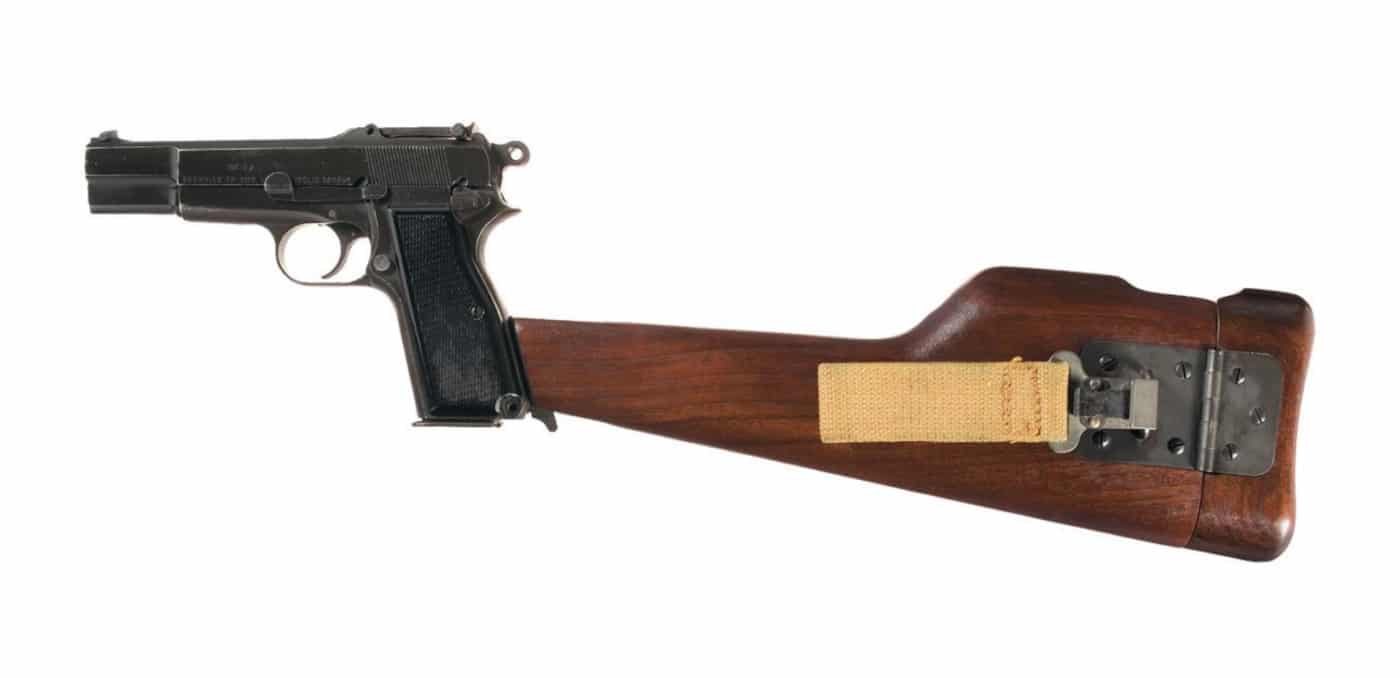
His prototype 9mm pistol had a magazine capacity of 17 rounds. The slide was designed with a breechblock similar to the Savage pistols of the time. And it was a striker-fired pistol. The breechblock assembly held the striker, the hammer that is linked to the striker, and the sear. The trigger mechanism links to the breechblock when the slide is fully forward. The design was quite different.
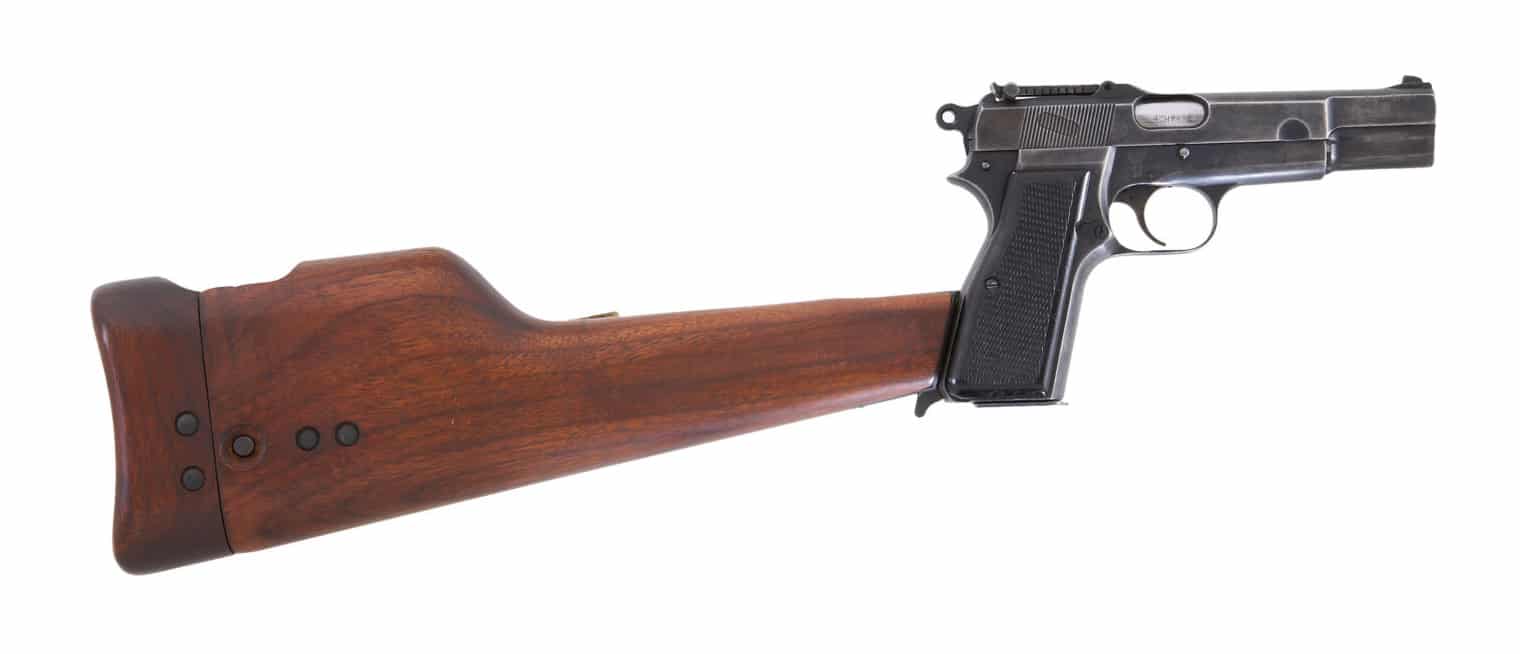
Browning passed away in 1926 before the design was finished. Dieudonné Joseph Saive, famed Belgian small arms designer, took over the design. Saive, in fact, had tweaked a few of Browning’s designs as part of his job. The design was refined after several trials held by the Versailles Trial Commission. He completed the design, but totally reworked Browning’s original striker-fired pistol idea.
Saive ended up using design elements from the 1911. Hey, it was a proven design and the 1911 design patents expired around 1930, so why not? Three years later, the Grande Puissance was completely transformed into a hammer-fired design, with internal locking lugs like the 1911. He decreased magazine capacity to 13 rounds and incorporated the barrel bushing into the slide. By 1934, the Grande Puissance was finished, and the French military shrugged their shoulders and decided to pass. They chose a home-grown design and called it Modèle 1935 pistol.
The first country to adopt the new pistol was Belgium, and the pistol entered into military service in 1935 as the P-35. The “35” refers to the year the pistol was brought into service. More than 60 other countries would adopt the pistol. When France walked away from the Grande Puissance, the name was changed to “High Power”. This was the first major name change for the pistol, and it happened prior to World War II. The next name change came when the Nazis invaded Belgium at the start of the war.
Emigrant to Immigrant?
The Germans knew a good pistol design, so during their occupation of Belgium they continued production of the pistol and renamed it “9mm Pistole 640(b)”. These are Waffenampt proofed and demand high prices from collectors. Most of the Nazis pistols were issued to Waffen-SS and Fallschirmjäger personnel.
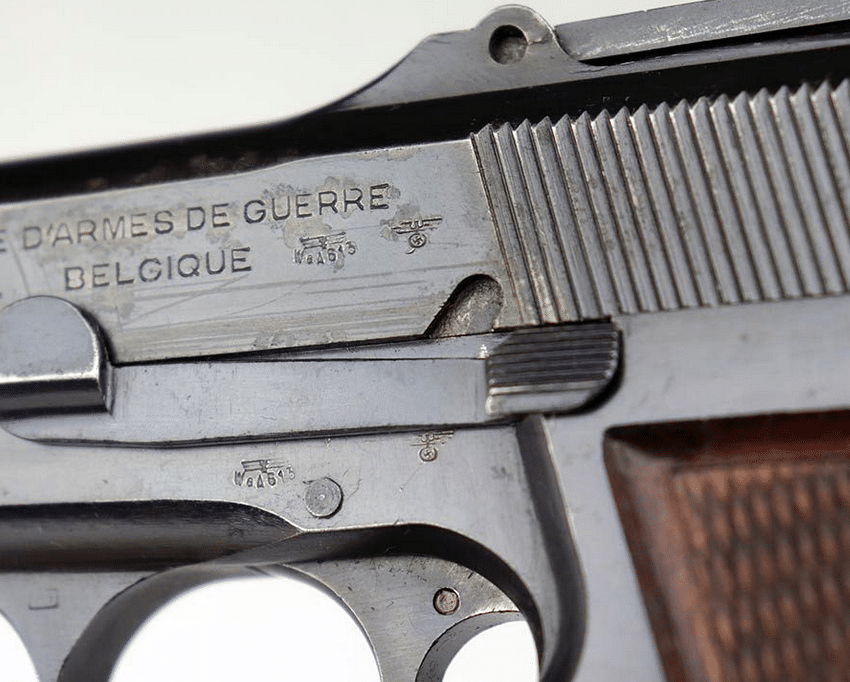
Prior to the Nazis rolling into Belgium, the country squirreled away the plans for the pistol and secretly took the design drawing to England. The idea was to have the John Inglis and Company in Toronto Canada manufacture the pistol for the Allies.
Inglis began production in 1944 and produced two variants, one with fixed sights and one with an adjustable rear sight and detachable shoulder stock/holster. This second variant was for a Nationalist Chinese contract. By 1945, British Commonwealth troops were being issued the pistol.
British airborne forces and commando units favored the pistol. The official British designation for the pistol was Mk 1, or Mk 1*. British Commonwealth countries called it something different, the Pistol No 2 Mk 1, or Pistol No 2 Mk 1*. The British actually changed the designation after 1962 to L9A1, and it was in service with British forces until the 2010s.
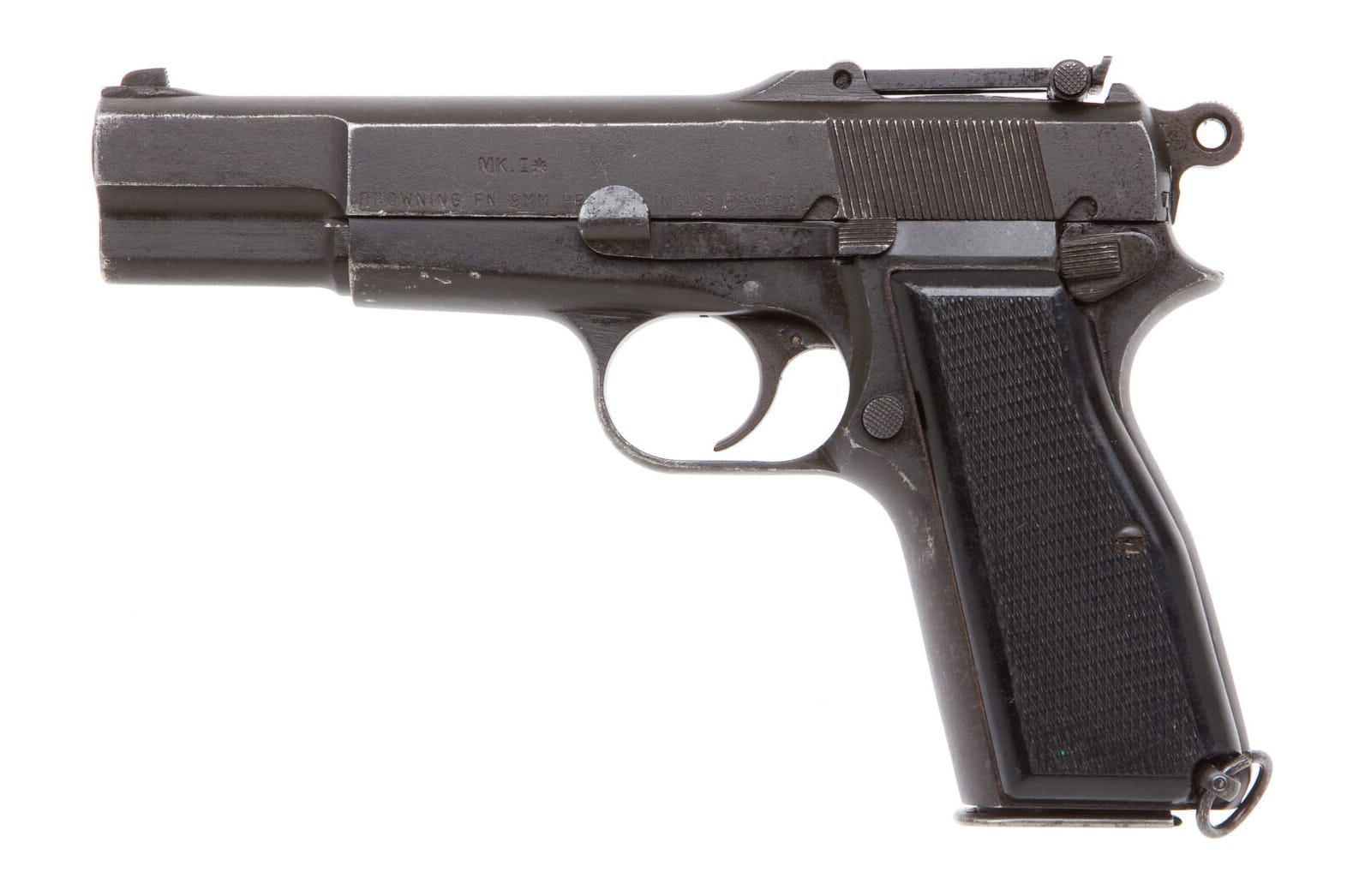
After the war, production continued in Belgium. Both tangent rear sight models with a slot cut for a stock as well as a fixed sight model were produced. The fixed sight model is the most common and went to various military contracts.
Coming to America
Civilian variants of the P-35 pistol began appearing in the United States as the “Hi-Power”, with changes such as a switch to an external extractor in the 1960s being incorporated. Currently, Springfield Armory offers the highly successful SA-35, a U.S.-made pistol that takes all the appealing features of the original design and adds in modern enhancements and updates. These include forged steel parts, improved ergonomics and enhanced controls, modern sights, improved feed ramp design and an increased 15-round capacity with a drop-free magazine design.
Whatever you choose to call your P-35-based pistol, know this it is one of the most successful pistols ever designed. And that’s all you really need to know, because, what’s in a name?
Editor’s Note: Please be sure to check out The Armory Life Forum, where you can comment about our daily articles, as well as just talk guns and gear. Click the “Go To Forum Thread” link below to jump in!
Join the Discussion
Featured in this article
Continue Reading
Did you enjoy this article?

 302
302




